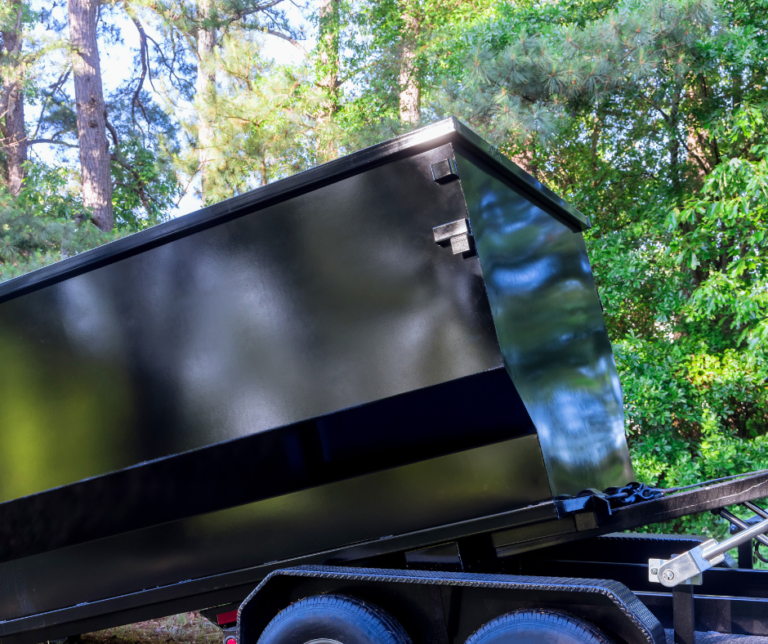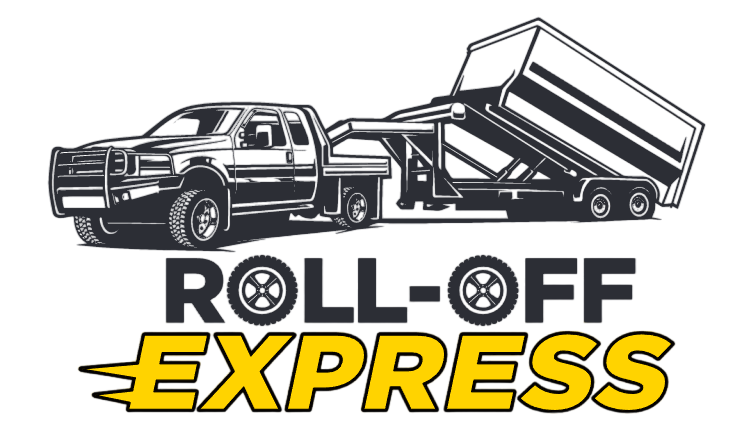

Effectively utilizing a dumpster is key to getting the most out of it while ensuring everything is safe. Here’s a deeper look at our advice:
First and foremost, load large and heavy objects such as chunks of concrete or heavy metal at the base of the dumpster. This sets a firm foundation, minimizing movement during transit. Neglecting this step could lead to problems, especially with large amounts of heavy waste. For significant concrete disposal, it’s advisable to opt for a construction dumpster, typically designed for such materials.
Once the heavy stuff is in, it’s time to add cumbersome items like old furniture or big household goods. This approach helps you make the most of the space you have.
Using a box cutter, break down cardboard boxes to maximize space. This is particularly useful for projects that generate a lot of packaging material.
Keep the load balanced throughout the dumpster. If the weight isn’t evenly distributed, it could pose transport risks.
This technique is invaluable. Once you’ve placed the larger items, use smaller waste to occupy any voids, effectively utilizing every inch of the dumpster.
Organize your loading process from one end of the dumpster to the other. This methodical approach aids in the more efficient unloading at waste disposal sites.
For bulky items like furniture, disassembling them into smaller pieces can be a real space-saver, especially in smaller dumpsters.
Avoid overloading to prevent extra fees and safety hazards. Most dumpsters have a fill line to show the maximum safe loading limit.
Refrain from including dangerous items like flammable liquids or toxic substances. These require specific disposal procedures and aren’t suitable for standard dumpsters.
Utilize the knowledge of your rental service. They can offer tailored advice on best practices for your particular project and might even provide services like live load dumpsters for efficient loading and unloading.
The positioning of your dumpster is critical for both efficient use and safety purposes. Make sure to place it on a solid, stable surface that can withstand heavy loads. It’s important to choose a spot where it won’t obstruct traffic or breach any local regulations. Think about how far the waste needs to be carried – ideally, you want the dumpster close to your waste generation area, like a construction site, to reduce the effort in transporting debris. Additionally, ensure there’s ample space for the dumpster’s rear doors to swing open, which makes loading much easier.
To prevent unnecessary delays and possible extra charges, it’s wise to get informed about the best practices for dumpster placement. You can learn more by checking out the article ‘Dumpster Permits 101’.
Efficiency in loading a dumpster begins with proper preparation. Organize your waste into distinct groups such as metals, woods, and garden debris. This not only streamlines the loading process but also aids in recycling efforts. Utilize tools like box cutters and handsaws to reduce the size of larger items. Be sure to separate any hazardous materials like batteries or paint, as these usually need specific disposal procedures. Taking the time to break down bulky items, like disassembling furniture or chopping large branches, can greatly enhance the dumpster’s capacity.
To make the most of your dumpster’s capacity, be strategic about how you arrange your items. Begin by placing flat, wide items like sheets of plywood or wall paneling at the bottom. Follow this with larger objects, and then fill in the remaining spaces with smaller debris. This layering technique minimizes unused space and maximizes the dumpster’s volume. Additionally, pay attention to the shape and dimensions of your items. Often, a slight adjustment in positioning can enable an item to fit more efficiently, conserving valuable space.
To fully exploit your dumpster’s capacity, a careful and methodical loading approach is key:
Placing heavy materials such as concrete, metal, or bulky furniture at the bottom is essential. This creates a stable, secure base, crucial for preventing movement during transit and setting a solid foundation for the layers above.
After establishing the heavy base, layer in medium-weight items like smaller electronics, pieces of wood, or dense garden waste. This is crucial for maintaining a balanced load, evenly distributing weight, and protecting lighter materials from being crushed.
The final layer should consist of lighter objects such as textiles, plastics, or smaller wooden items. These materials can compress, enabling optimal use of space. This top layer serves as a buffer, absorbing any shifts from the lower layers.
During the loading process, it’s important to regularly identify and fill any open spaces. This could involve using items like bagged trash or soft materials to occupy these gaps. Such practice ensures that every available space is used efficiently, making your dumpster rental more economical.
For additional insights on how to maximize your dumpster space and get the best value, consider reading ‘ ‘How to Efficiently Load a Residential Friendly Roll-Off Dumpster: 10 Steps for Success!’
Minimizing the size of bulky items, such as furniture or large branches, is key. Employ techniques like dismantling bed frames, taking apart shelving, or cutting large branches into smaller pieces. This not only conserves space but also eases the loading process, making it safer and more feasible, particularly with smaller dumpsters or when dealing with a lot of bulky waste.
Using the dumpster’s rear doors can significantly improve the loading process. It facilitates the careful placement of heavy and large items, minimizing physical strain and the risk of injury. This entry point is especially beneficial for organizing the load. You can carry in large items and precisely position them, ensuring the load is balanced and securely packed.
Placing the heaviest items at the bottom of the dumpster is not merely about conserving space; it’s a crucial safety practice. This approach protects lighter, often recyclable materials from damage and ensures the dumpster remains stable while in transit.
Careful placement of items is essential to maintain the dumpster’s equilibrium. Imbalanced loads can create significant risks during transportation. The objective is to evenly spread the weight throughout the base of the dumpster, preventing any potential tilting or shifting.
To fully use the capacity of your dumpster, strategically fill in any voids with smaller waste and loose debris. This technique allows for the disposal of more material while also securing the load, minimizing movement during transportation.
Adhering to the dumpster’s weight limit and fill line is crucial. Overloading can result in legal complications, additional costs, and safety issues. Continuously monitor your load, particularly when disposing of heavy materials like soil or concrete. If you’re uncertain, it’s wise to seek guidance from your dumpster rental provider or consider opting for a larger dumpster size.”

Roll-Off Express | LETS TALK TRASH | Dumpster Rentals